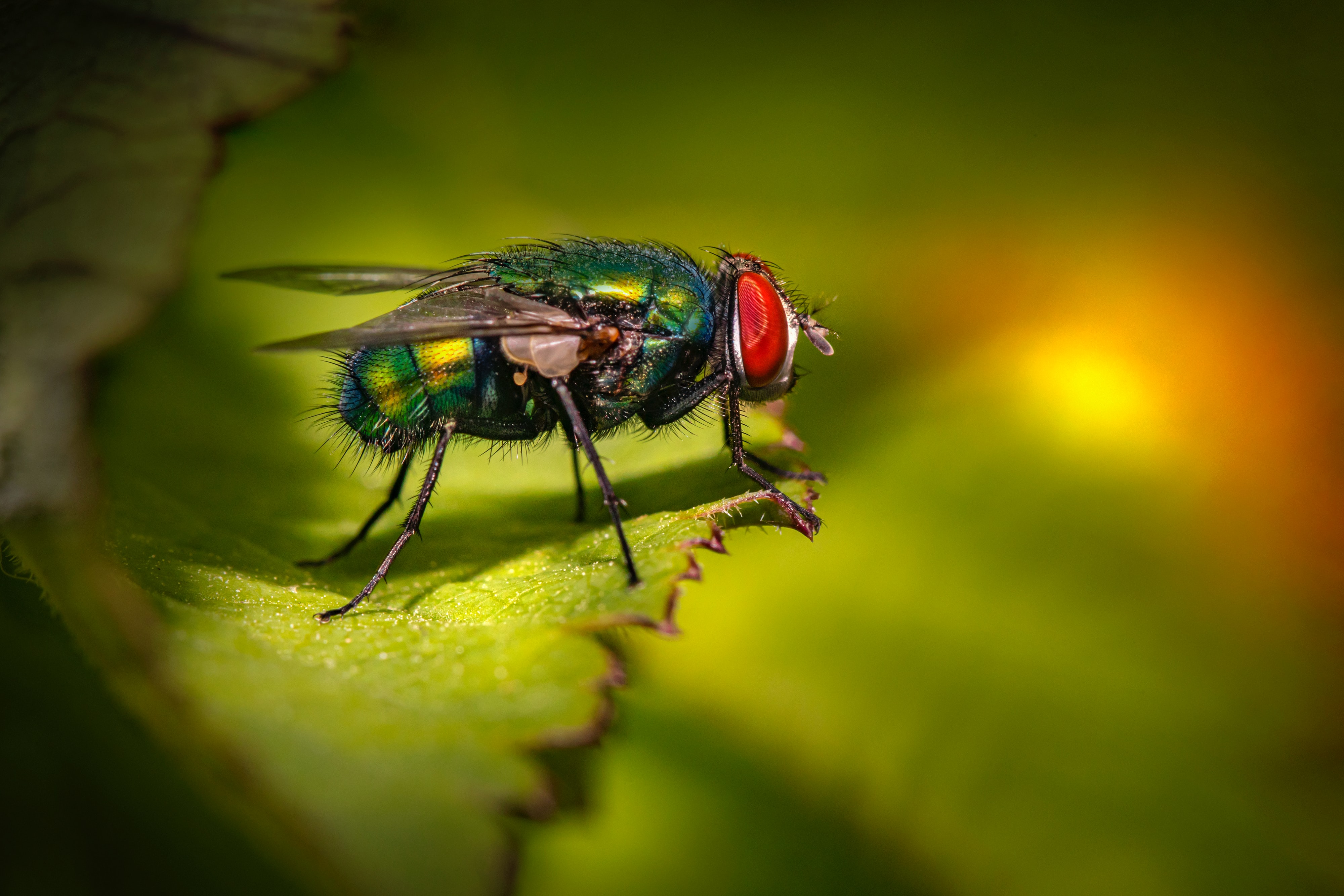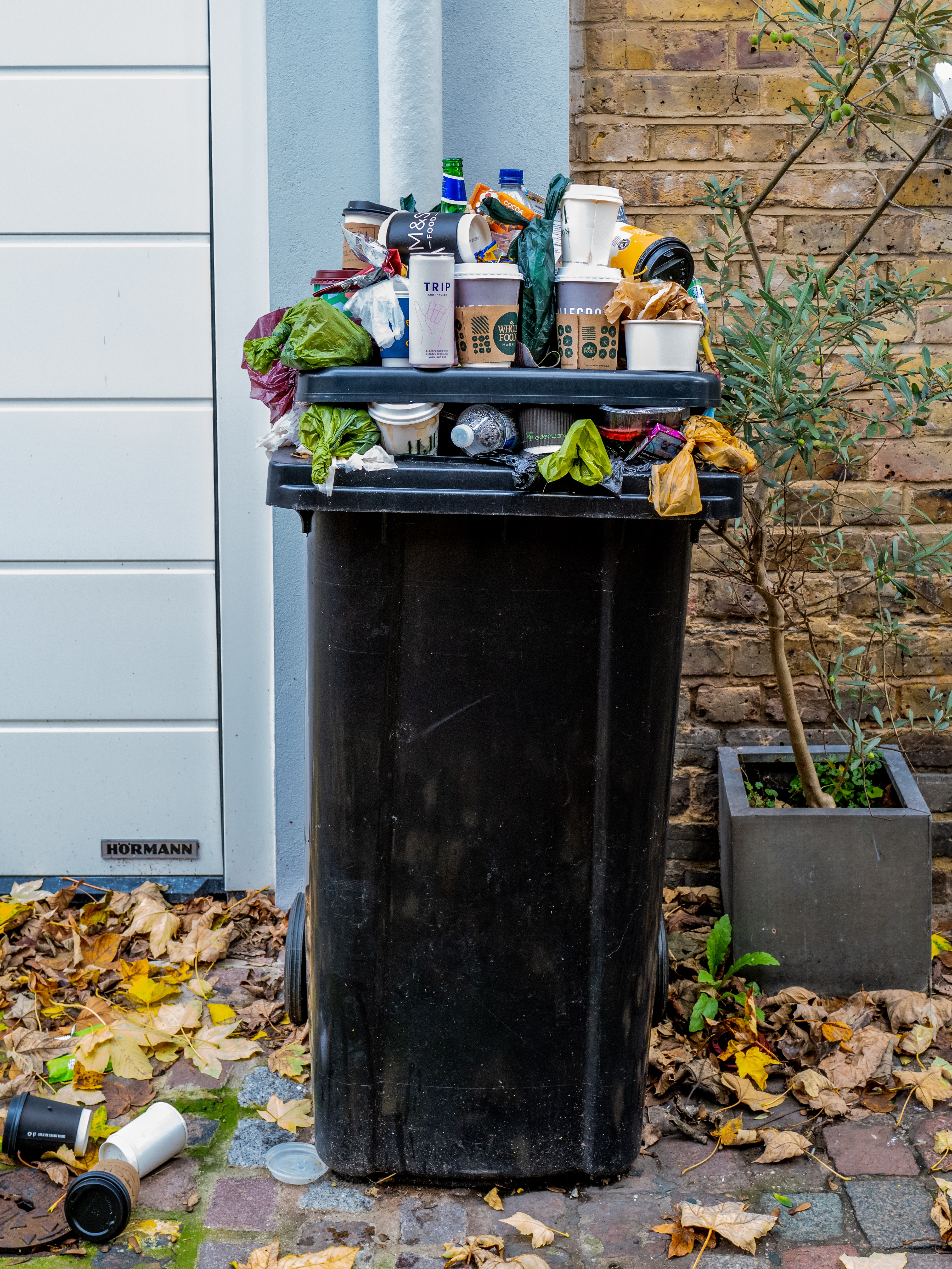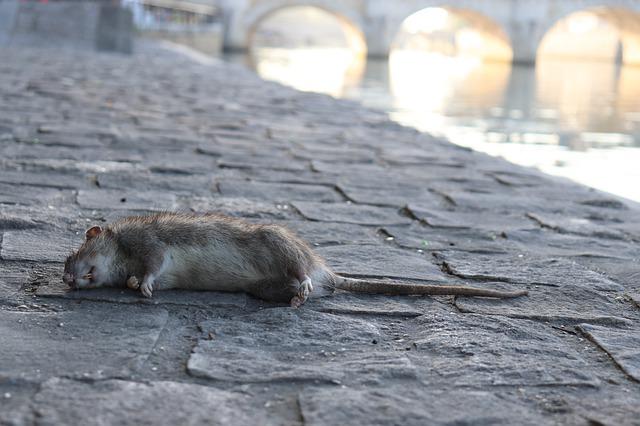Summers in Texas are always hot, but this summer has been hotter than hot. With the recent extreme heat wave only barely behind us, and no end to recurring 100+ degree days in sight, it’s easy to focus all your attention on keeping cool inside your home and forget that sometimes your safe haven can become something else’s haven as well.
Though we usually think of rats and mice invading homes during the late fall and winter, when summer heat becomes excessive, it’s not uncommon to see these pests entering homes in search of water and shelter. And once inside your home they can cause all sorts of issues while they are alive (see our blogs here and here), and even after they are dead. Even a single animal carcass can bring with it not only an odor of decay bad enough to pervade throughout your entire home, but the potential for a massive blow fly infestation. If you think the occasional fly buzzing around you during an outdoor summer picnic is annoying, imagine trying to grab a bite to eat in the solace of your air conditioned house only to be surrounded by thousands of flies threatening to infect your food with any number of dangerous pathogens. Or perhaps even more stomach-churning, imagine going to grab a sandwich only to see a pile a maggots in your kitchen cabinet or along the baseboard. It’s enough to send you flying out of your home, with the risk of heat stroke the last thing on your mind.
Fortunately, The Bug Dude is here to help you keep cool through any pest-related crisis.

What do Blow Flies Look Like?
The term “blow fly” refers to several species of fly, each of which has a slightly different appearance, preferred habitat, and particular food preference. Fortunately, the differences are small enough that you don’t need to break out a microscope to determine the exact species in order to know that you have a blow fly problem.
In general, these flies substantially resemble house flies in appearance except that they are slightly larger and have a metallic sheen in a blue, green, copper, or black color. They are generally between .2” and .6” in length, have large compound eyes, short antennae, and 1 pair of wings. The larvae of these flies (also known as maggots) are between .3” and .9” in length, are white or cream-colored, and are eyeless and legless. As the larvae go through their life stages and mature, they create an outer skin (known as puparia) where they will go through their final stage before emerging as adult flies. These puparia are dark brown and can resemble rat droppings or roach egg cases. So if you see anything that you think might be a rat dropping, call The Bug Dude @ 1-800-310-BUGS (2847) immediately to get a professional evaluation instead of attempting DIY pest control and risking treating for a pest you don’t even have, and letting the pest you actually do have propagate.

Where do Blow Flies Live?
Adult blow flies will generally be found around sources of food or places where they can lay their eggs. Their ideal gathering places are: animal carcasses (the fresher, the better), animal feces, garbage, poorly maintained compost piles, other decaying vegetation or meat, and even plants and flowers.
The adult flies will lay their eggs on fresh animal carcasses, often being the first organisms to come into contact with a recently departed animal; the decaying meat of the animal is essential for the fly larvae to survive. Generally, the life cycle from egg to adult will take between 16 and 35 days to complete depending on how favorable the conditions are, with temperature being a primary factor (depending on the species in question though, either hot or cool temperatures could be ideal, making no season and no location safe from these pests). This means that if you happen to have a rat or mouse die inside your attic or in one of your walls (which is especially common if you have done some DIY rodent baiting), you could be harboring maggots in just a matter of hours (a single blow fly can lay up to 2,000 eggs in its life, and eggs will hatch into larvae in just 12 hours), and in about 2 weeks you could find yourself inundated with a house full of flies. While the flies can move freely throughout your house, the larvae will stay relatively close to their initial food source throughout their development but could still be spotted along nearby baseboards or in other secluded, dry areas as they mature and leave the food source to form puparia and finish developing.

What do Blow Flies Eat?
Adult blow flies can feed on a variety of materials but generally consume flower nectar, plant sap, and a variety of sugary materials (including those found in your kitchen or in your trash).
Larval blow flies, however, consume primarily dead animals or animal excrement. This means that any infestation of rodents or wildlife in or around your home could quickly lead to you finding yourself contending with piles of maggots or swarms of flies, whether from the animal’s droppings or from a deceased animal itself. So if you notice wildlife or rodents making your house their home, call The Bug Dude ASAP to keep the problem from escalating the way our summer heat has been.

Are Blow Flies Dangerous?
Though neither the adult nor larval stages of blow flies can bite you or your pets, they can still be a significant risk to you and your loved ones’ health. How? They are a vector for a variety of diseases such as typhoid fever, dysentery, cholera, anthrax, leprosy, tuberculosis, and many more. Because these flies spend a lot of their time in highly unsanitary conditions, they can easily pick up harmful bacteria and transmit those bacteria to whatever they land on (such as the sandwich you are about to eat, or the cat food sitting in the bowl in your kitchen), which in turn can be transmitted to you or your pets. Even worse news for those of us in the highly populated DFW area is that the flies found in urban areas tend to carry more pathogens than those in rural areas. So it’s vital that as soon as you notice anything you think might be maggots or see more than just the occasional house fly buzzing around your home, call in the experts at The Bug Dude @ 1-800-310-BUGS (2847) to keep you and your loved ones safe.

How do you Prevent Blow Flies?
When it comes to preventing blow flies from taking over your house or yard, the most important thing to consider is maintaining good sanitation habits. Here are a few tips to make your home and yard less hospitable to these flies:
- Maintain a pest control service with The Bug Dude to keep rodents from living in your home and eventually becoming a host to blow flies.
- If you see or smell a dead animal in or around your home, call The Bug Dude at 817-354-5350 immediately to get assistance in locating the dead animal (if necessary) and getting it properly disposed of.
- Regularly clean garbage cans.
- Ensure all garbage cans have tight-fitting lids.
- Use plastic bags within garbage cans to reduce odor and keep the cans cleaner.
- Keep outdoor garbage cans as far away from the home as possible.
- Make sure that window and door screens are equipped and in good shape; don’t keep windows or doors open that aren’t properly outfitted with adequate screens.
- Make sure that window and door seals are in good condition and are properly fitted.
- Clean up pet excrement quickly and regularly.
- Regularly pick up lawn debris.
- If composting, make sure to follow proper procedures.
- Promptly clean up any food spills or debris indoors and outdoors.
How do you Eliminate Blow Flies?
While a fly swatter will help with the occasional fly that finds its way into your home, if you notice more than one in a rare while or start seeing maggots anywhere on your property, it’s time to act quickly. At the first sign of flies taking over your house or yard, call The Bug Dude at 817-354-5350 to get one of our expert technicians out to eliminate the problem. Not only can our technicians find and address the source of the flies, they can eliminate them before they become a health hazard within your own home.
Though summer makes us think of outdoor activities, and the pests associated with being in the great outdoors, it’s important to remember that we aren’t the only things seeking comfort from the heat within a nice air-conditioned home. So at the first buzz of a fly trying to land on your dinner, call The Bug Dude and let our techs help you keep your cool in any heated (pest) situation.
Further Reading:
“Blow Fly” – Texas A&M AgriLife Extension – Field Guide to Common Texas Insects
“Flies carry even more disease than we thought” – Bonnie Burton – CNET
“Blow Flies” – Theresa A. Dellinger and Eric Day, Department of Entomology, Virginia Tech
“Is This a Typical Texas Heat Wave or the Coldest Summer of the Rest of Our Lives?” – Forrest Wilder – TexasMonthly
Author Bio: Alissa Breach has been gaining knowledge and experience around pest control concerns over the last 12 years while working for Mid-Cities Pest Control. She has a creative writing BA from UW-Madison and is always pursuing new and interesting writing projects.




